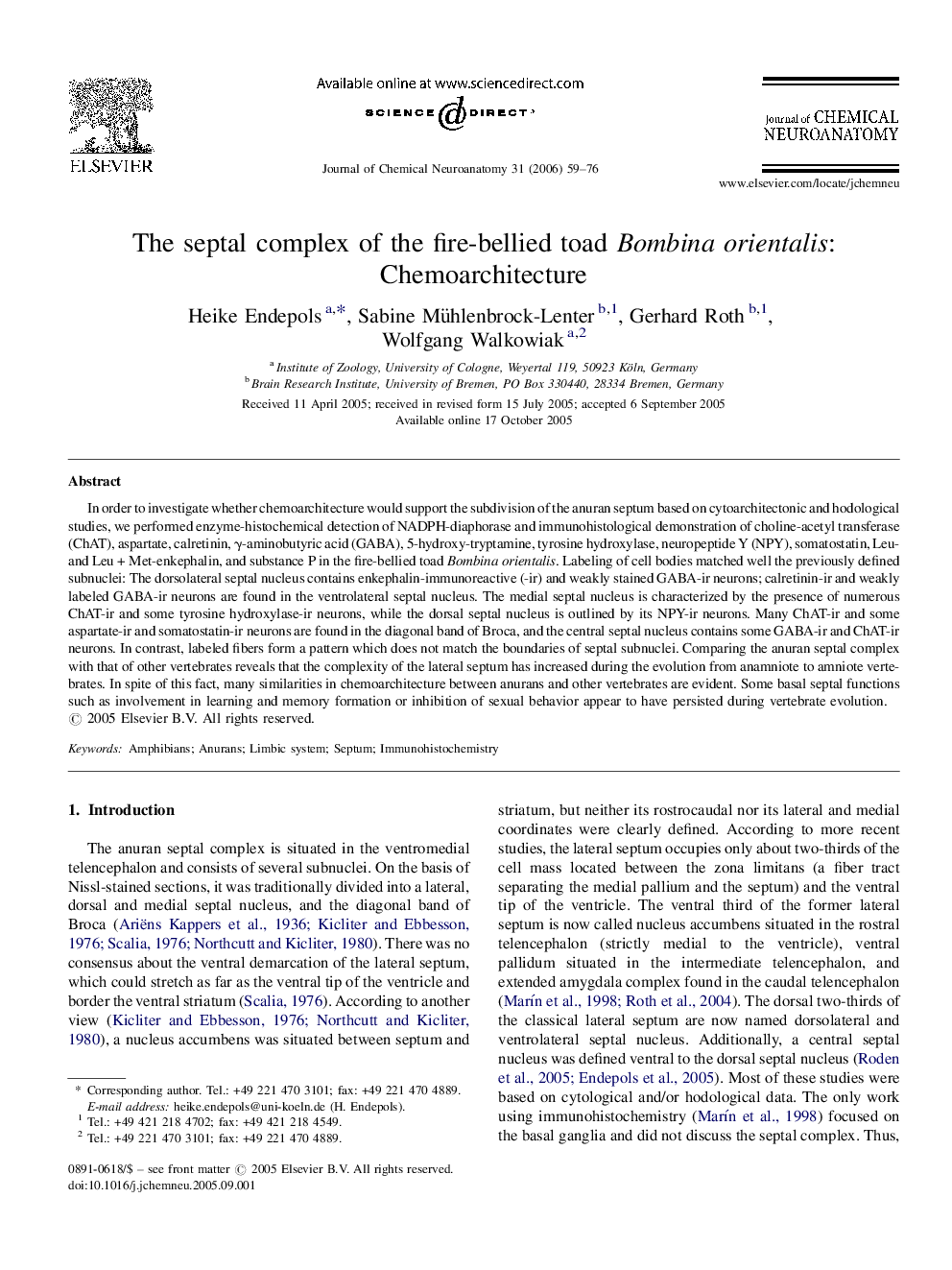| Article ID | Journal | Published Year | Pages | File Type |
|---|---|---|---|---|
| 1989307 | Journal of Chemical Neuroanatomy | 2006 | 18 Pages |
In order to investigate whether chemoarchitecture would support the subdivision of the anuran septum based on cytoarchitectonic and hodological studies, we performed enzyme-histochemical detection of NADPH-diaphorase and immunohistological demonstration of choline-acetyl transferase (ChAT), aspartate, calretinin, γ-aminobutyric acid (GABA), 5-hydroxy-tryptamine, tyrosine hydroxylase, neuropeptide Y (NPY), somatostatin, Leu- and Leu + Met-enkephalin, and substance P in the fire-bellied toad Bombina orientalis. Labeling of cell bodies matched well the previously defined subnuclei: The dorsolateral septal nucleus contains enkephalin-immunoreactive (-ir) and weakly stained GABA-ir neurons; calretinin-ir and weakly labeled GABA-ir neurons are found in the ventrolateral septal nucleus. The medial septal nucleus is characterized by the presence of numerous ChAT-ir and some tyrosine hydroxylase-ir neurons, while the dorsal septal nucleus is outlined by its NPY-ir neurons. Many ChAT-ir and some aspartate-ir and somatostatin-ir neurons are found in the diagonal band of Broca, and the central septal nucleus contains some GABA-ir and ChAT-ir neurons. In contrast, labeled fibers form a pattern which does not match the boundaries of septal subnuclei. Comparing the anuran septal complex with that of other vertebrates reveals that the complexity of the lateral septum has increased during the evolution from anamniote to amniote vertebrates. In spite of this fact, many similarities in chemoarchitecture between anurans and other vertebrates are evident. Some basal septal functions such as involvement in learning and memory formation or inhibition of sexual behavior appear to have persisted during vertebrate evolution.
